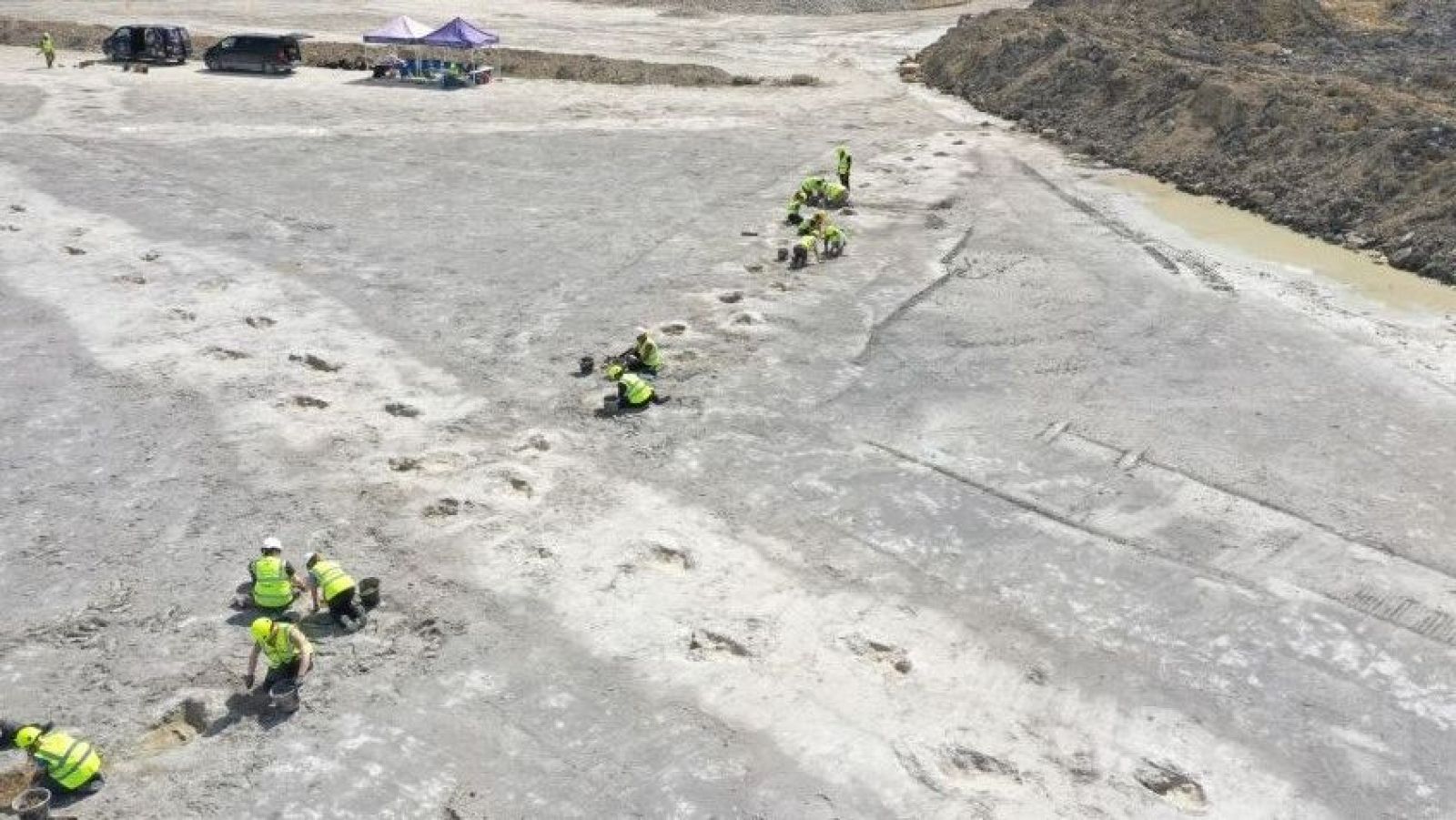There are more than 200 footprints from the Middle Jurassic period belonging to four herbivorous dinosaurs and one carnivorous dinosaur.. One hundred researchers from the universities of Oxford and Birmingham They work at the excavation of Oxfordshire.
A group of more than 100 researchers of the Universities of Oxford and Birmingham has discovered the largest dinosaur site in Britainwith more than 200 footprints dates from the Middle Jurassic, 166 million years ago.
The excavation, which was carried out in June 2024 in one Quarry in Oxfordshire (Northwest London), five extensive footprints discovered, with more than 150 meters long In the case of the most comprehensive, the University of Birmingham in a communication
Four of the footprints are from dinosaurs gigantic herbivores with long neckscalled sauropods, and the fifth was created by the dinosaur carnivore Megalosaurusthe first of its kind to be named and scientifically described in 1824.
Moreover, since the University of Birmingham They point out that part of the site showed that the footprints of carnivores and herbivores crossed each otherwhich raises questions about whether and how the two species interacted.
“These footprints provide an extraordinarily revealing insight into the lives of dinosaurs details about their movements, interactions and the environment tropical forest in which they lived,” the professor explained Micropalaeontology at the University of Birmingham Kirsty Edgar.
A quarry worker discovered the footprints, buried under the mudwhen he felt “unusual bumps” while removing clay with his vehicle to clear the site’s soil, and informed the experts.
The BBC program ‘Digging for Britain’ filmed the work
Within a week, hundred researchers They traveled to the quarry to analyze the site and build 3D models details of the place and make-up 20,000 photoseven from the air with drones, to document the more than 200 footprints.
The program team alsoDigging to Britain‘ by the BBC filmed the work as part of a new series that will be broadcast from next week and the excavation can be seen in the exhibition ‘Breaking ground‘of the Oxford University Museum of Natural History (OUMNH).
Dr. Duncan Murdock, earth scientist at the Oxford University Museum of Natural History (OUMNH)said: “The preservation is so detailed that we can see how the clay deformed as the dinosaur’s legs moved in and out. “Together with other fossils such as burrows, shells and plants, we can bring to life the muddy lagoon environment that dinosaurs walked through .”

